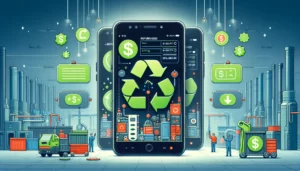For any business, the HVAC system is one of the most energy-intensive mechanisms. Just space cooling accounts for an average of 15% of the total electricity that commercial buildings use. The U.S. Department of Energy reports that much of the cost and energy that helps to power HVAC ends up lost as waste – on average, up to 30% in commercial buildings.
Reducing the wasted consumption of HVAC energy is a critical component in the push towards greater sustainability within the business world. Besides, it is an excellent way to reduce operating costs substantially. Many steps that managers and business owners can take to reduce costs and improve sustainability require no or little expense. Many of these steps are very simple, while waste-reducing practices that are more complex, frequently offer an excellent ROI.
Managers or business owners who would like to make environmental sustainability improvements and reduce operating costs at the same time should consider the following 6 HVAC energy saving tips. If you work with an experienced HVAC technician, these tips can all be made to be even more useful.
Change HVAC filters on a regular basis to reduce wasted energy by 5 to 10%
When filters are dirty it cause restriction of air flow which overworks the HVAC system. This increases operating costs and results in poor indoor air quality as well as higher commercial HVAC maintenance costs and problems. HVAC filters should be checked every quarter. Find an HVAC technician to perform check-ups regularly.
Change HVAC filters every month. HVAC filters should be changed at least every three months at the longest. Changing dirty filters is among the easiest sustainability steps that can be taken by a business, and it can also reduce wasted energy costs by 5 to 10%.
Use programmable thermostats and save hundreds of dollars per year
Temperature settings within a business often can be a point of contention. If programmable thermostats are installed it will eliminate a lot of the burden of temperature settings being tailored to meet the preferences of a diverse customer base and workforce by focusing on reduced costs and sustainability.
When programmable thermostats are installed it can affect wasted energy and sustainable in several ways. The temperature of a building can be set so that it runs as a lower or higher temperature (depending on which season it is) whenever indoor spaces are not being used, and that can save you hundreds of dollars per year.
There are 7-day model programmable thermostats that are available, which are perfect for schedules that change regularly. There are also 5+2 models which are well-suited for businesses that operate on five-day regular schedules were less energy is needed on the weekend or another two-day period.
If an HVAC technician can be found who has any commercial experience that can help managers and business owners find the most effective thermostats for their businesses.
Have quality maintenance done on a regular basis to reduce commercial HVAC maintenance expenses by 40%
Commercial HVAC maintenance is similar to a car needing regular tune-ups – both of these are necessary to maintain top performance. When quality maintenance is done to all HVAC equipment and systems on a regular basis, it helps to ensure that the equipment and systems do not waste energy due to faulty, aging, or substandard performance.
Be proactive about HVAC systems in your building by providing them with regular quality maintenance. That can help to reduce your commercial HVAC maintenance expenses by as much as 40%. However, the key to achieving this level of savings is to find an HVAC technician who is capable of providingi-depth advice, work, and knowledge that is critical to maintaining HVAC equipment and systems properly.
Properly seal your cooling and heating ducts to improve the efficiency of your HVAC by 20%. Doing something simple like sealing your cooling and heating ducts properly can help to improve the efficiency of your HVAC system by 20% or even more. The best way to maximize efficiency is to find an HVAC technician who has experience sealing ducts.
Ducts may be sealed using blown-in duct sealant, like Aeroseal, foil tape, or mastic. Wrapping the ducts with insulation further improves the sealing effect. First focus on the areas of your building that are unprotected – in cooled/unheated storage spaces and under the building.
Improve efficiency by 5 to 20% with HAVC replacement and/or HVAC upgrades
The best way to improve the efficiency of your HVAC sometimes comes through replacing or upgrading existing HVAC systems and equipment. Running HVAC equipment and system past their recommended lifespans can lead to very high maintenance and energy costs.
If the heat pump or air conditioner in a building is over 10 years old, then it should be replaced with an Energy-Star certified product. These heat pumps and air conditioners can help to reduce energy costs by as much as 20% and improve sustainability. Boilers or furnaces that are over 15 years old also will be likely due to to be replaced or upgraded, and Energy Star-certified boilers and furnaces offer significant energy and cost savings.
When existing rooftop HVAC units are retrofitted with advanced digital sensors or controls, that can bring ventilated air in only when it is needed – which is also referred to as demand controlled ventilation which is another successful and important way for businesses to improve their energy efficiency significantly.
Work with an experienced and qualified HVAC contractor to optimize your HVAC sustainability
To get the most out of your HVAC replacement, upgrade, or repair, work with an experienced HVAC contractor. Your contractor will be able to perform checkups regularly and provide business owners with advice on how and when necessary maintenance should be performed.
Joining a utility quality maintenance program, such as the one that PG&E offers, is one of the most effective ways that the long-term viability of your HVAC system is ensured.





